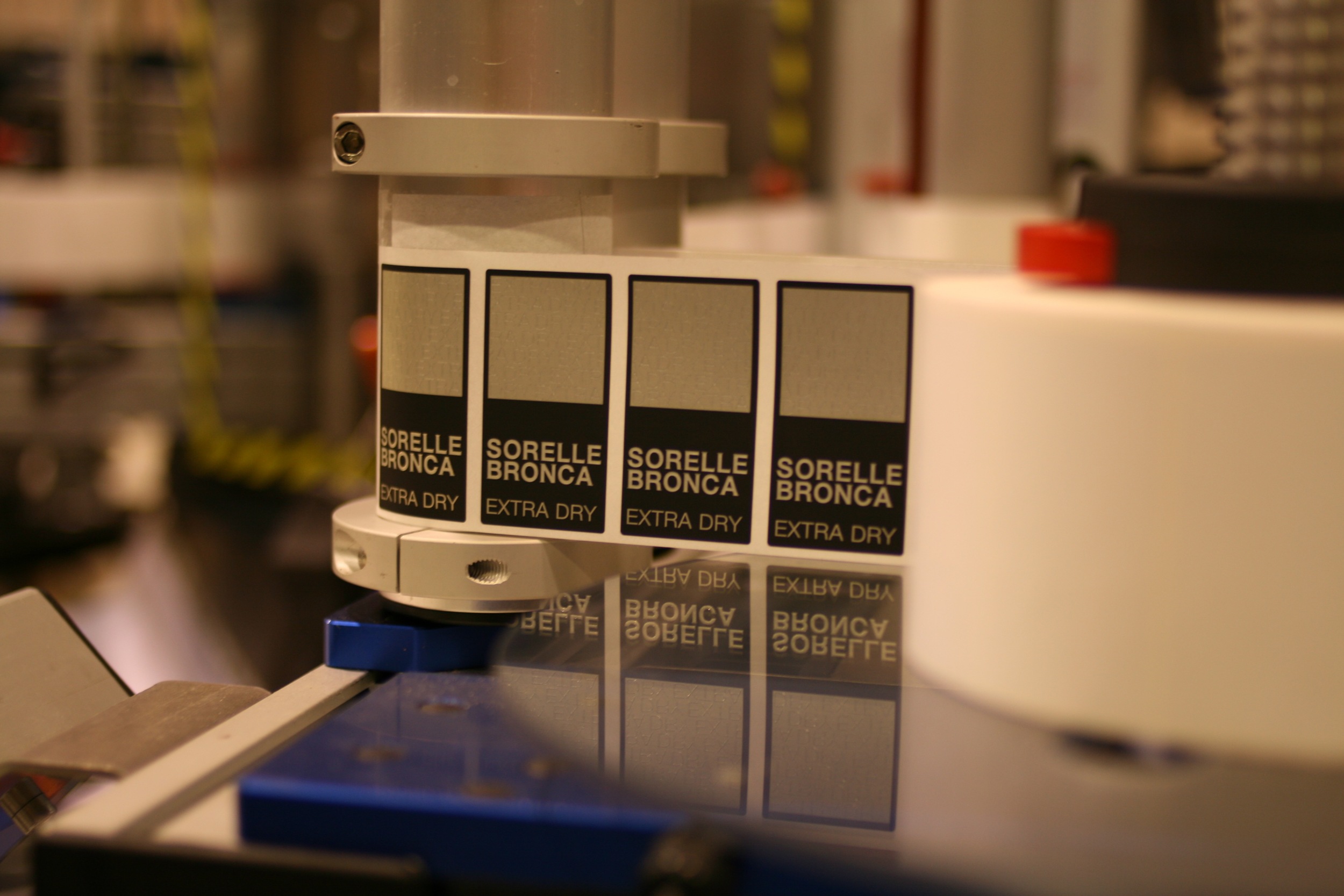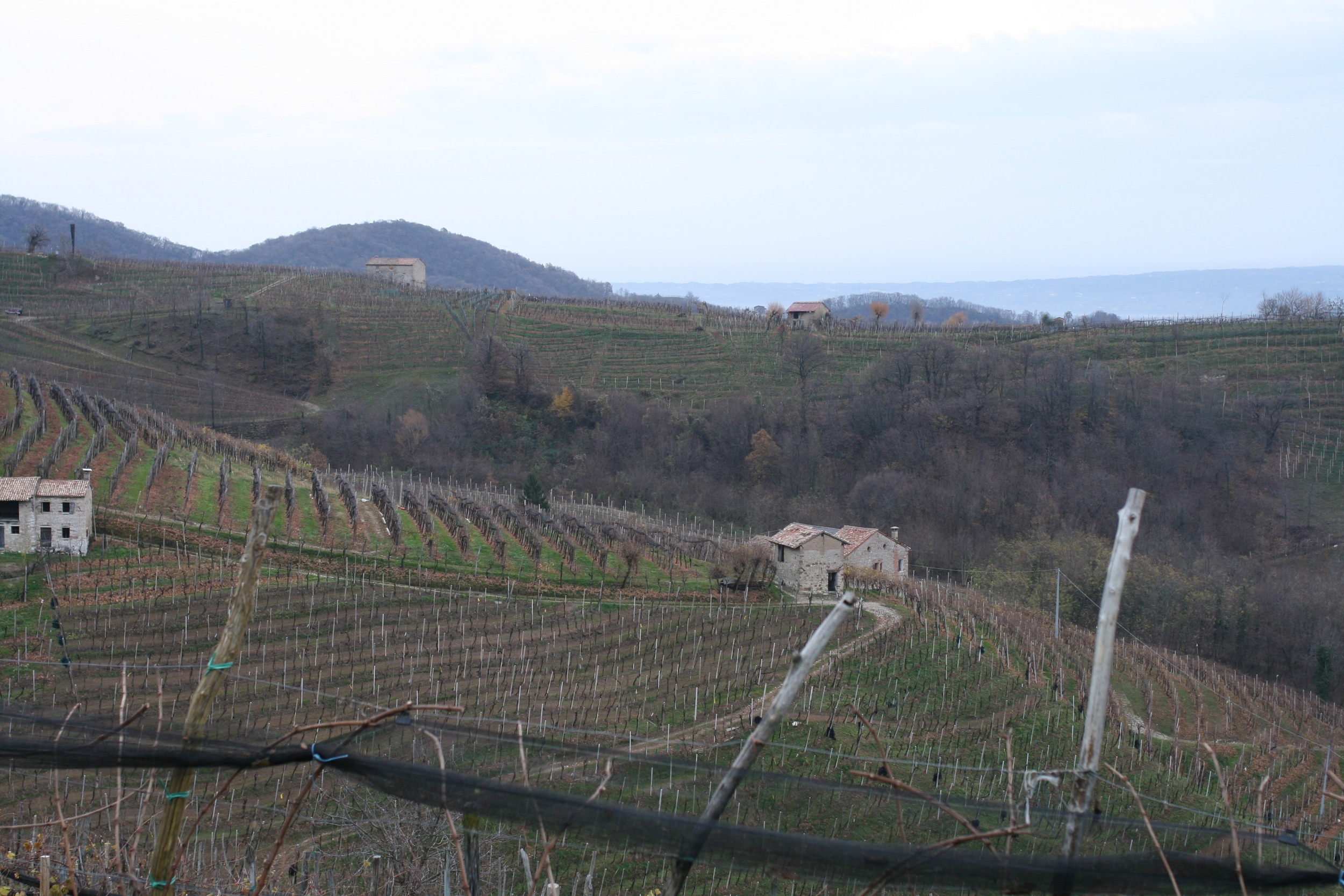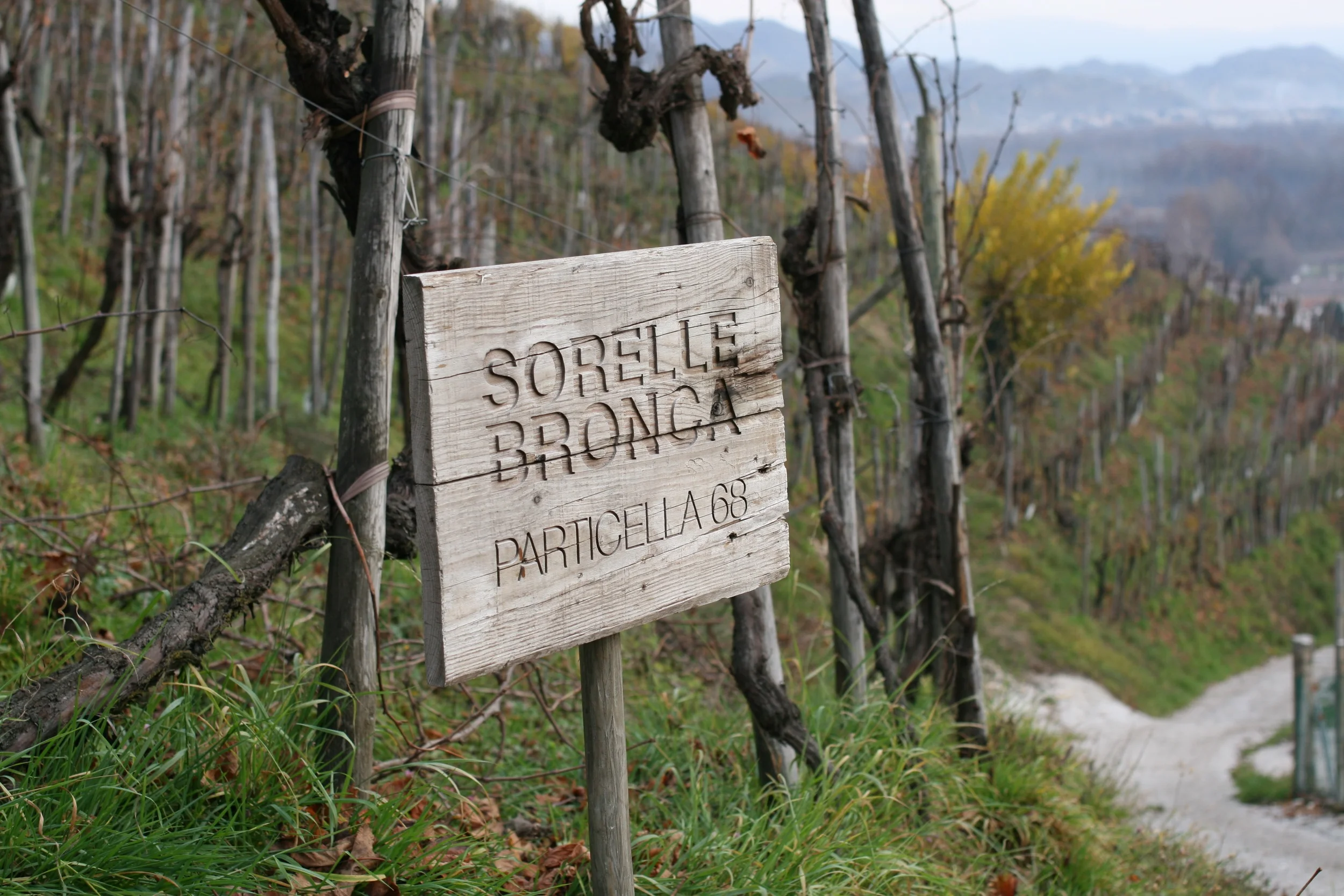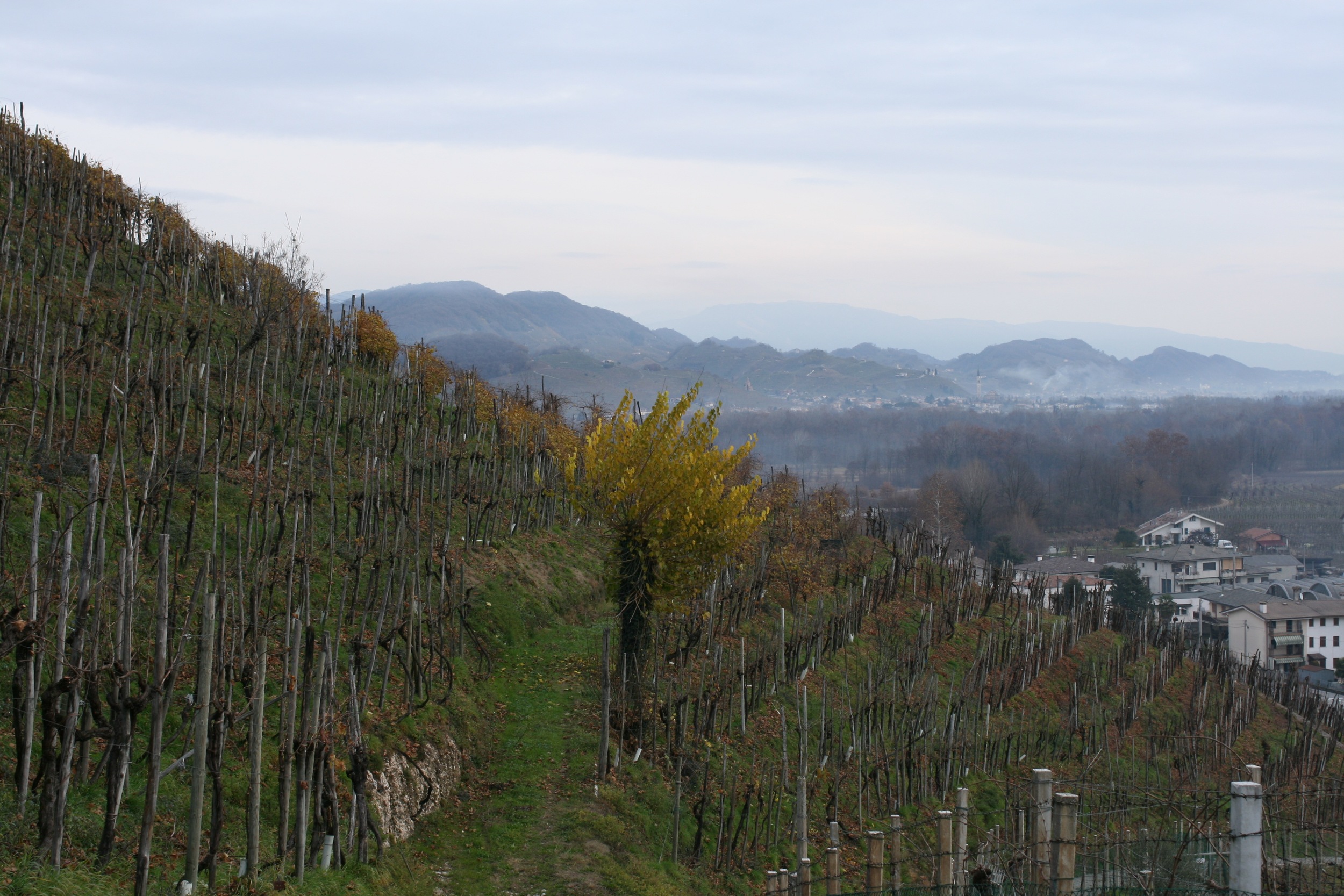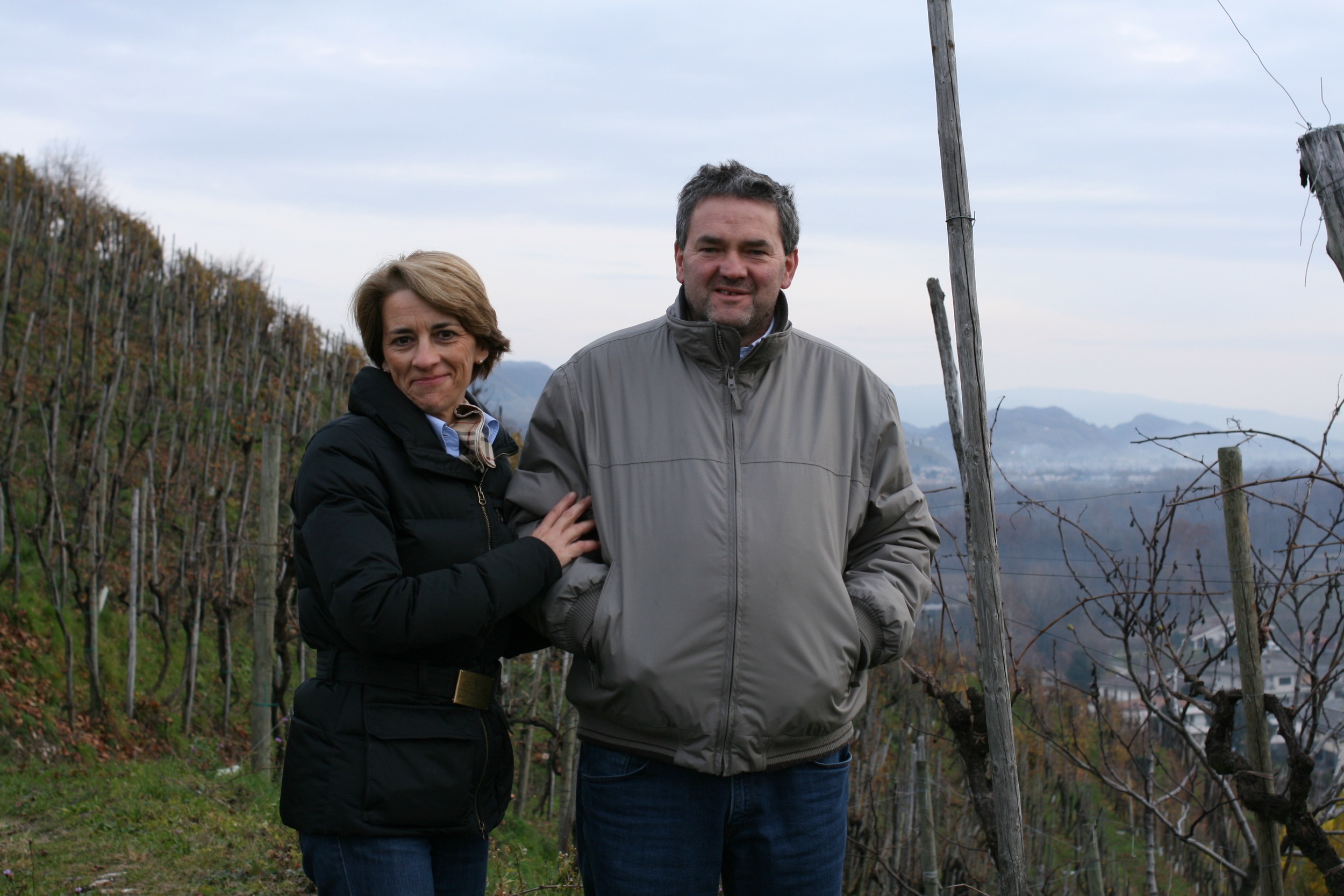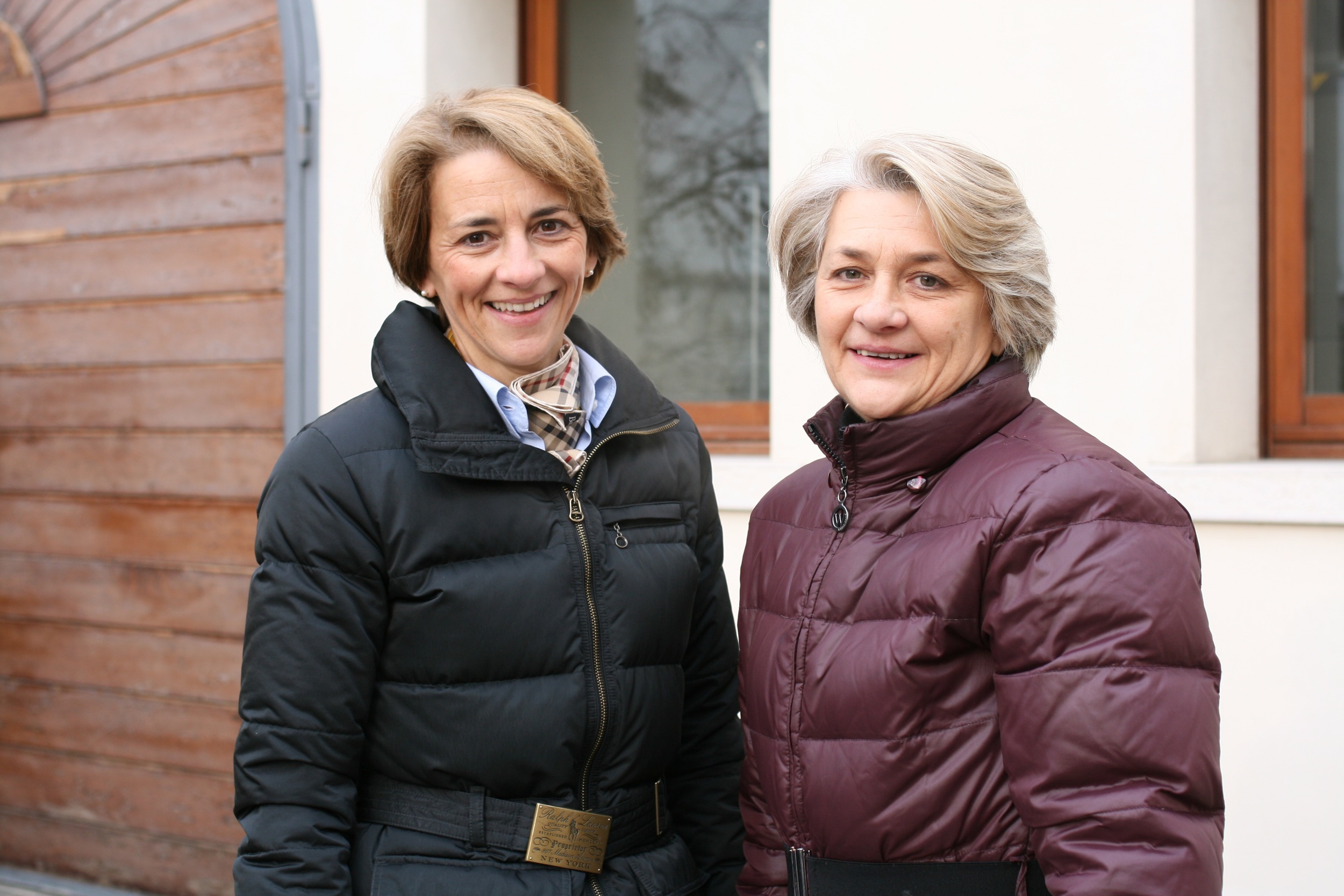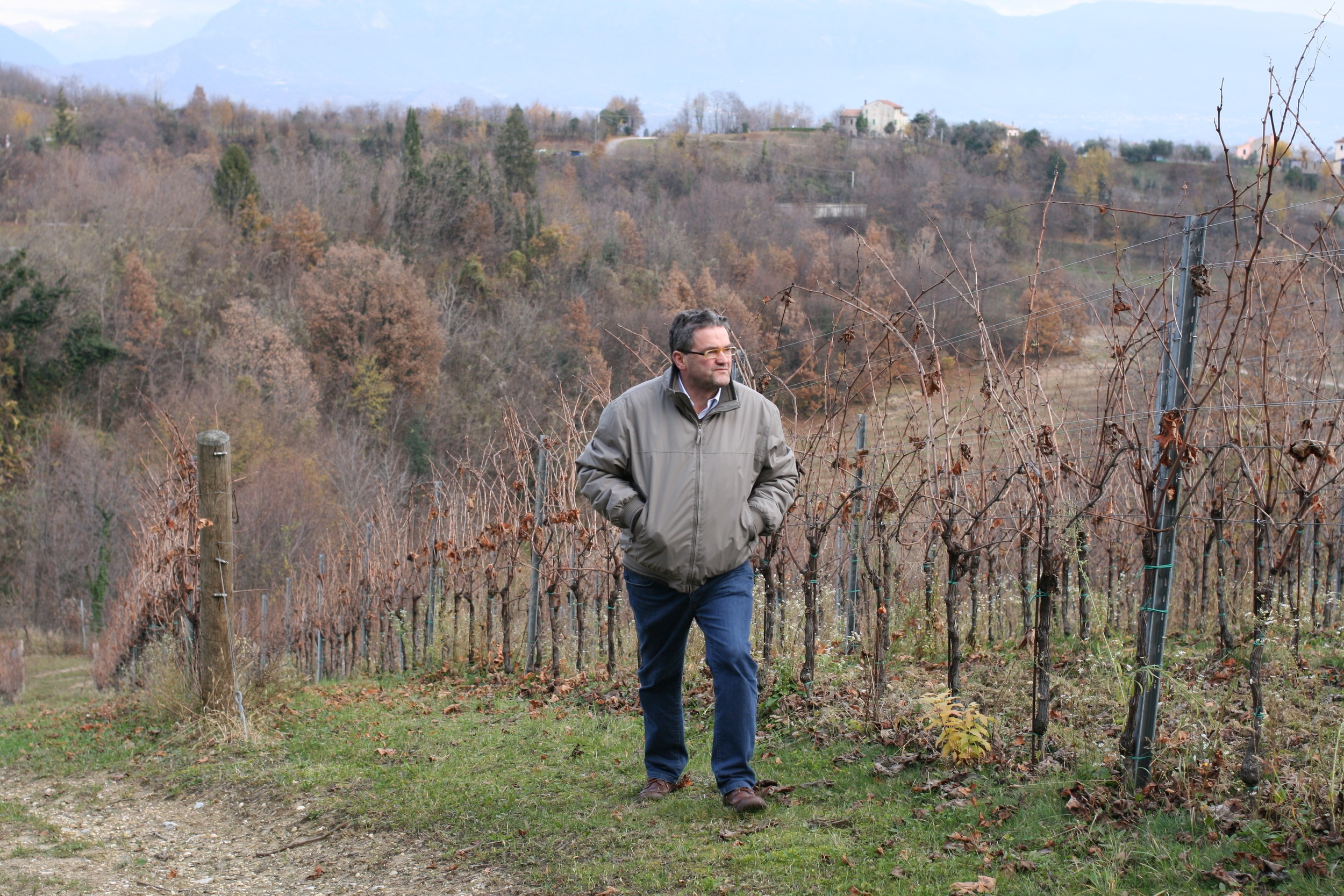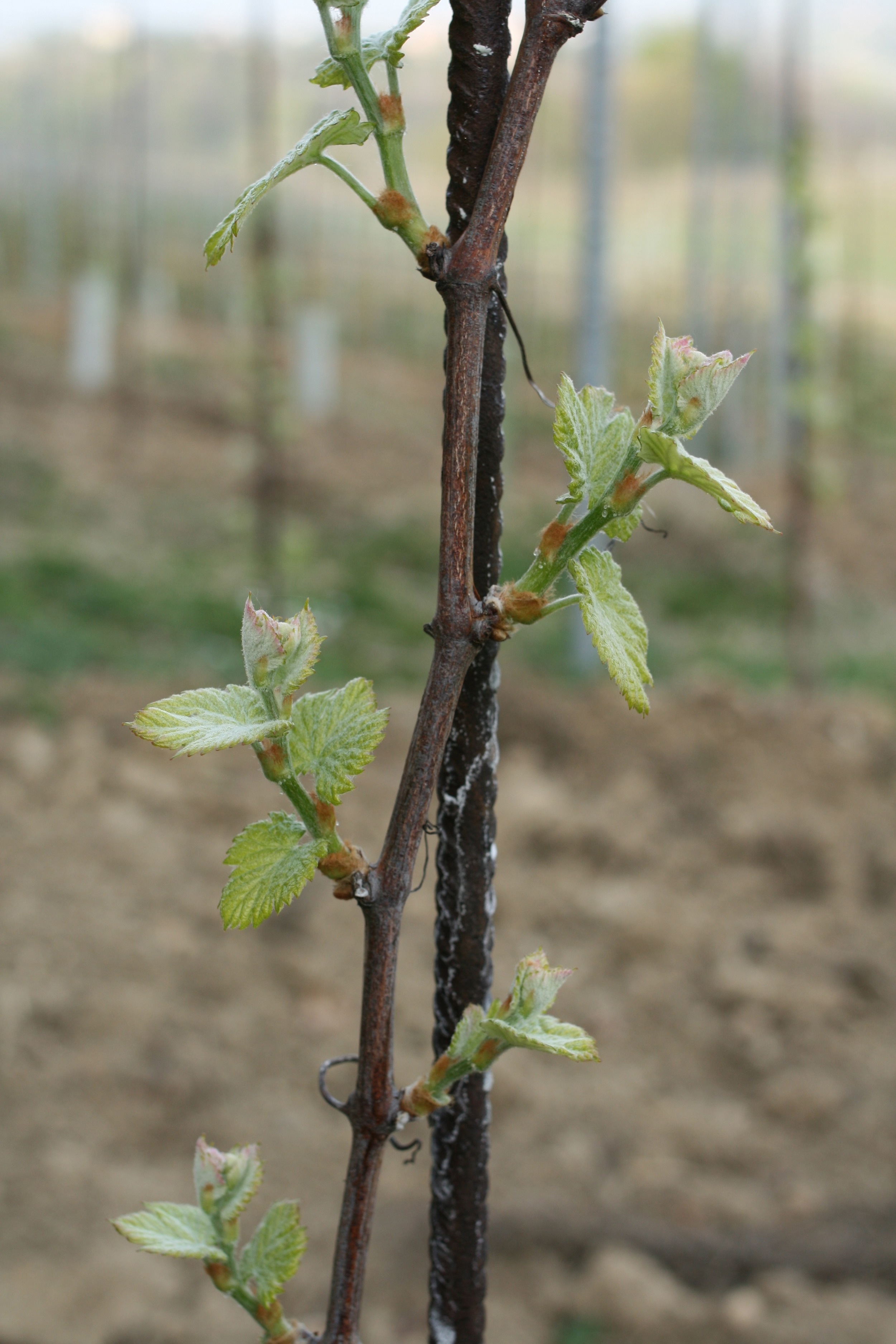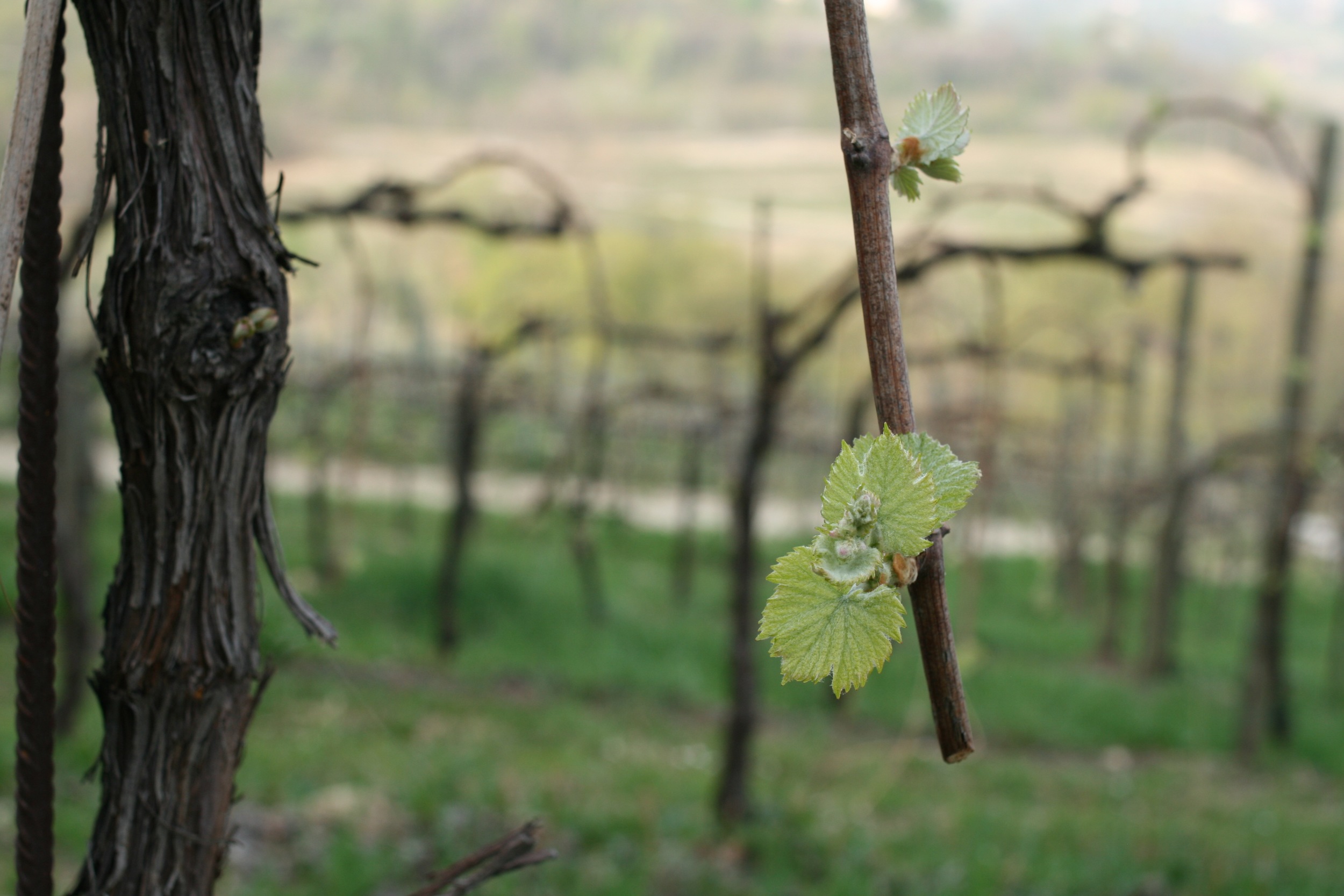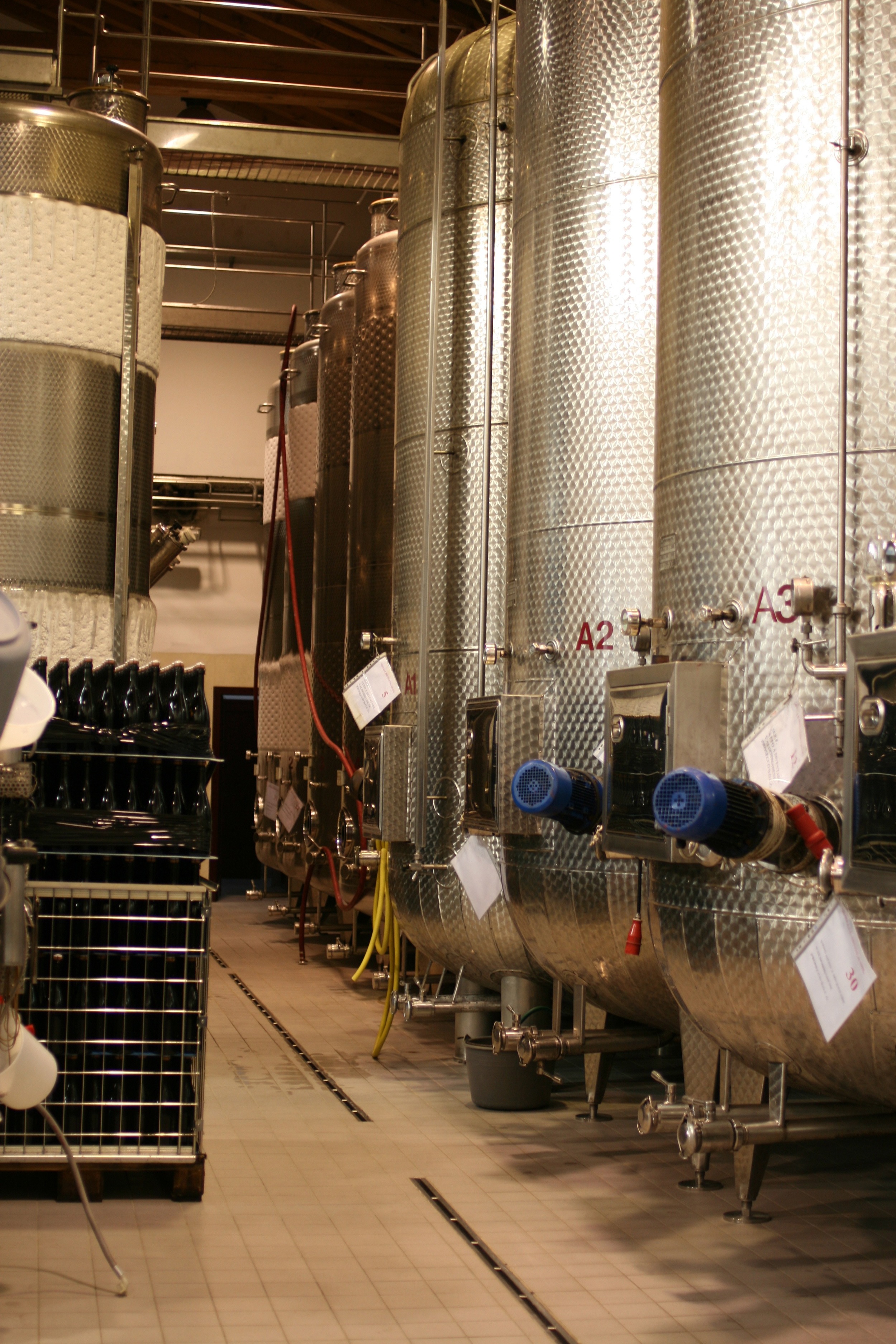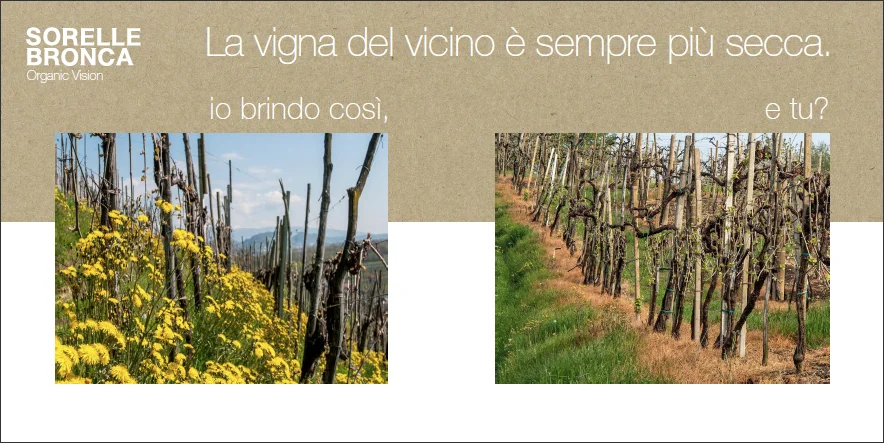Sorelle Bronca
About Sorelle Bronca:
Some grapes are versatile, making good wine in a range of styles, and some grapes seem to have just one thing they do well; the Prosecco grape is only at its best when it is made into sparkling wine, and only when grown around the villages of Conegliano and Valdobbiadene, in the hills north-west of Venice. When it is grown and made correctly it has a pear-like aroma and flavor that is delightful, the perfect start to a meal.
Unfortunately most Prosecco is made by large, industrial-scale producers who buy base wine and then perform only the secondary (sparkling) fermentation themselves, often with mediocre results. By contrast, the Bronca sisters grow their own fruit in steep hillside vineyards, controlling the entire process themselves. Low yields and hillside-grown fruit ensure that the wine has good concentration and acidity. This acidity is necessary to balance the traditional ' Extra-Dry' level of sweetness. (Extra-Dry is slightly less dry than Brut; both terms are used to describe the amount of sweetness in sparkling wines. The Prosecco drunk in Italy is almost always Extra-Dry; the pear notes only emerge when the wine is not bone-dry, which is why Brut isn’t as good and is mostly exported. I have made a direct comparison between Brut and Extra-Dry batches of the same base-wine a number of times, at Bronca and elsewhere, and I have preferred the Extra-Dry every time. This is of course the opposite of the way sweetness works in Champagne, where the best wines are almost invariably Brut and Extra-Dry is reserved for supermarket cuvées.) This small estate is managed by Antonella and Ersiliana,the sisters ('Sorelle') Bronca, and their families.
The Wines:
Prosecco del Valdobbiadene, Extra Dry
This organically grown, estate-bottled sparkling wine is made primarily of the Prosecco grape (also called Glera) with small amounts of the traditional varieties Perera, Verdiso and Bianchetta. The 'bulk process,' a secondary fermentation in a tank rather than in the individual bottle, is used, as it is for almost all Prosecco. Half of the grape juice is made into still wine right at harvest, the other half is kept at very low temperature until needed. The second fermentation (for bubbles) takes place in special tanks that can stand the pressure, and consists of about half still wine and half grape juice (not sugar, as is normal.) After a long, slow fermentation the must is kept in contact with the fine lees for about 4 months, then filtered and bottled at about 13 grams of residual sweetness per liter. A number of batches are produced during the year to ensure freshness, and we import the wine frequently for the same reason. Prosecco is best drunk as fresh as possible.
Better grapes and more attention to detail make this Prosecco much tastier than the more commercial examples. As soon as you open it you can smell beautiful clean aromas of pear and green apple, with hints of herbs; the extended contact with the lees give the wine great persistence. The perfect aperitif, delicious with some lighter dishes, and a great upgrade to your spritz.
Prosecco del Valdobbiadene brut
This organically grown, estate-bottled sparkling wine is made primarily of the Prosecco grape (also called Glera) with small amounts of the traditional varieties Perera, Verdiso and Bianchetta. The 'bulk process,' a secondary fermentation in a tank rather than in the individual bottle, is used, as it is for almost all Prosecco. Half of the grape juice is made into still wine right at harvest, the other half is kept at very low temperature until needed. The second fermentation (for bubbles) takes place in special tanks that can stand the pressure, and consist of about half still wine and half grape juice (not sugar, as is normal.) After a long, slow fermentation the must is kept in contact with the fine lees for about 4 months, then filtered and bottled at about 7 grams of residual sweetness per liter. A number of batches are produced during the year to ensure freshness, and we import the wine frequently for the same reason. Prosecco is best drunk as fresh as possible.
Better grapes and more attention to detail make this Prosecco much tastier than the more commercial examples. As soon as you open it you can smell beautiful clean aromas of pear and green apple, with hints of herbs; the extended contact with the lees give the wine great persistence. The perfect aperitif, delicious with some lighter dishes, and a great upgrade to your spritz.
Prosecco del Valdobbiadene 'Particella 68', Extra Dry
The Bronca Sisters' best vineyard is called Particella 68, as is their reserve wine obtained from that vineyard. The site is perhaps 500 yards from the edge of the Cartizze boundary, the most prized growing area in the Prosecco zone; the wine is made from Prosecco grapes with very small amounts of the other traditional indigenous varieties (Verdisio, Bianchetta, and Perera). In my opinion this wine compares very favorably with the best Cartizze in style and in quality, although it is less expensive.
The vinification is unusual for Prosecco; instead of two seperate fermentations, (grape juice to still wine, then still wine to sparkling wine), the Bronca Sister’s Prosecco grapes are pressed and the juice is held at very low temperatures until it is ready to be made into sparkling wine (done periodically throughout the year to maintain the freshest possible stock) upon which time the must is put into a special fermenter and fermented directly to sparkling wine. This more costly single fermentation process retains more of the classic pear aroma that makes Prosecco distinctive, and the excellent acidity of the site balances very well with the Extra Dry level of sweetness. No sugar is added, all of the sweetness comes from the must.
Notes: pale straw color with a hint of green; very distinctive classic Prosecco aroma of fresh-cut pear; the pear/apple fruit notes continue on the palate, with the classic Extra Dry level of sweetness very well balanced by fresh acidity. The '68' is similar in aroma and flavor to the regular bottling, but with the volume turned up.
Particella 181 Prosecco di Valdobbiadene Superiore Rive de Rua DOCG
Sorelle Bronca’s Extra Dry changed my expectation of what everyday Prosecco could be ages ago, and I’ve drunk it weekly ever since. Now, perhaps twenty years later, they’ve changed my understanding of how good Prosecco can be absolutely; tasting the new Particella 181 for the first time was the wine-tasting equivalent of being hit by lightning. It smells like some kind of exalted green apple perfumed with honeysuckle; on the palate the balance of vivid fruit and electric acidity is just perfect; drinking it is such a pleasure. This is one of the best Italian sparkling wines I’ve had, and by far the best Prosecco.
What makes this wine so interesting? The vineyard, first of all; the soil is a reddish iron-tinged stony marl, the slope is steep; the farming is all by hand, with no use of herbicides; and the grapes are hand-harvested. (The classic Glera/Prosecco grape constitutes 90% of the blend, with other historic local varieties making up the other 10%.) Then the grapes are pressed, the juice is settled out, and the fermentation takes place in special reinforced tanks that can withstand the pressure of the fermentation, going directly from juice to sparkling wine in one step. (Most Prosecco is made in two fermentations, first from juice to white wine, then from wine to sparkling wine.) The result is kept in this tank on the fine lees for about six months, picking up texture and flavor, then bottled. About five grams of residual sweetness remain after the fermentation and aging, no additional sweetness is added.
I will be drinking this as an aperitif, mostly, but I would bet that it would be great with all sorts of food, too. Fritto misto is a classic pairing but tonight I’m going to drink it with fish tacos. I can’t wait!
Prosecco 'Particella 232', DOCG
Prosecco Treviso ‘Modì’, DOC
_____________________________________________
More Information:
Visit Sorelle Bronca’s website
Organic Farming: The below photos depict Sorelle Bronca's organic vineyard on the left and their neighbor's vineyard that is not being farmed organically on the right. The orange stripe under the neighbor's vines shows the use of herbicide.
